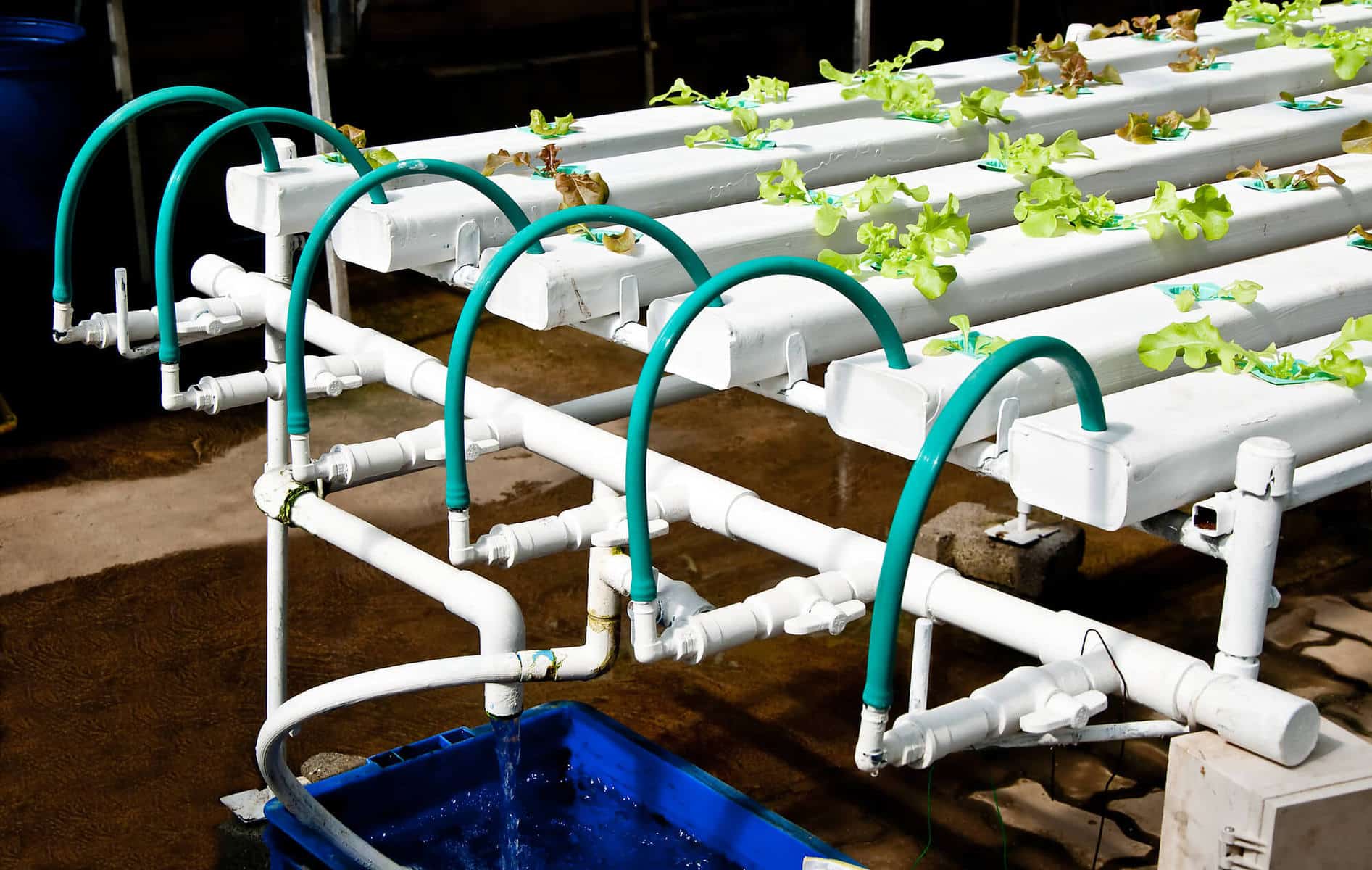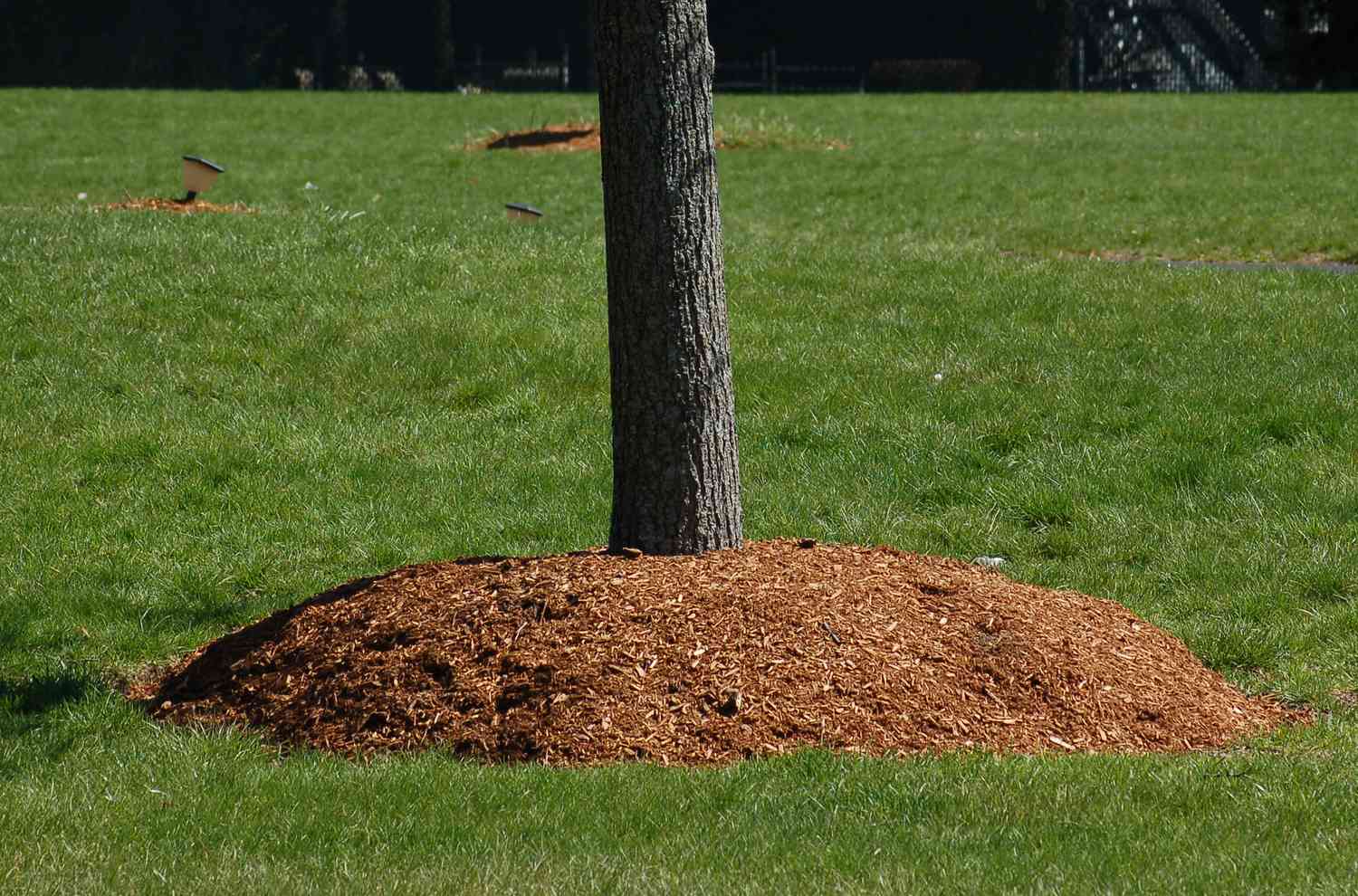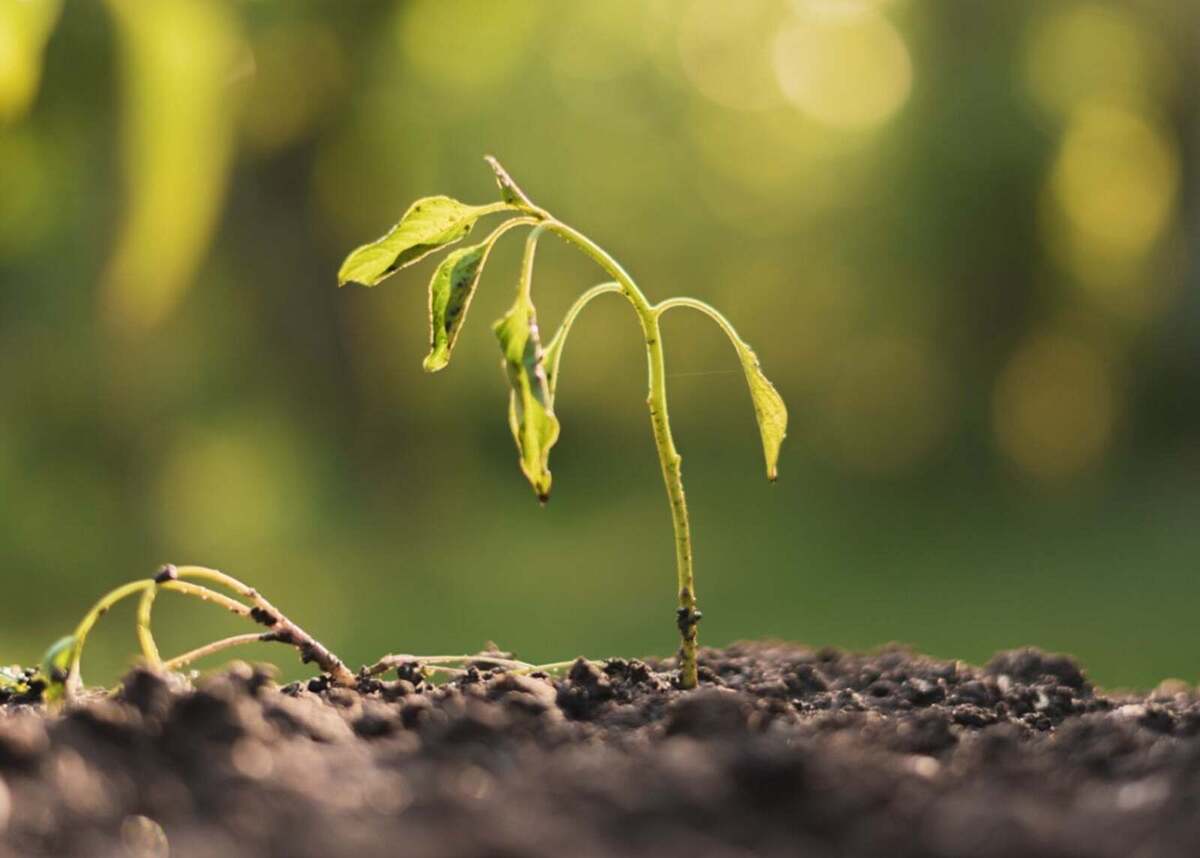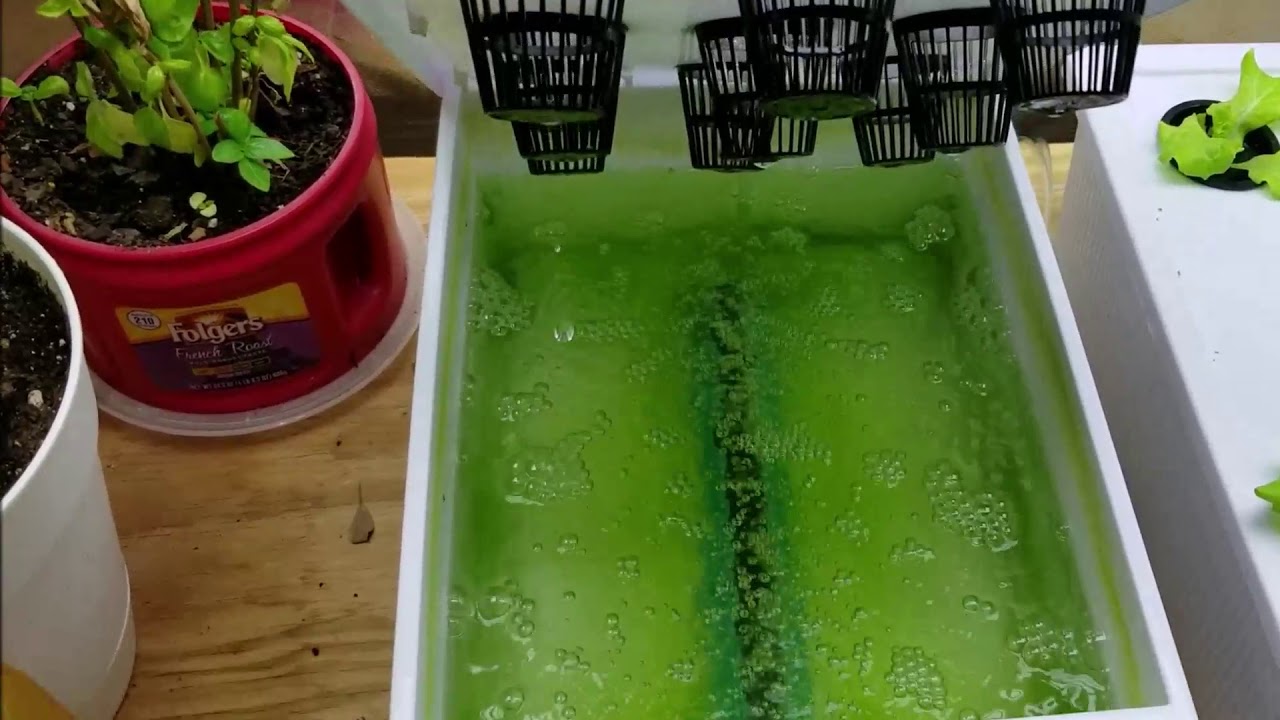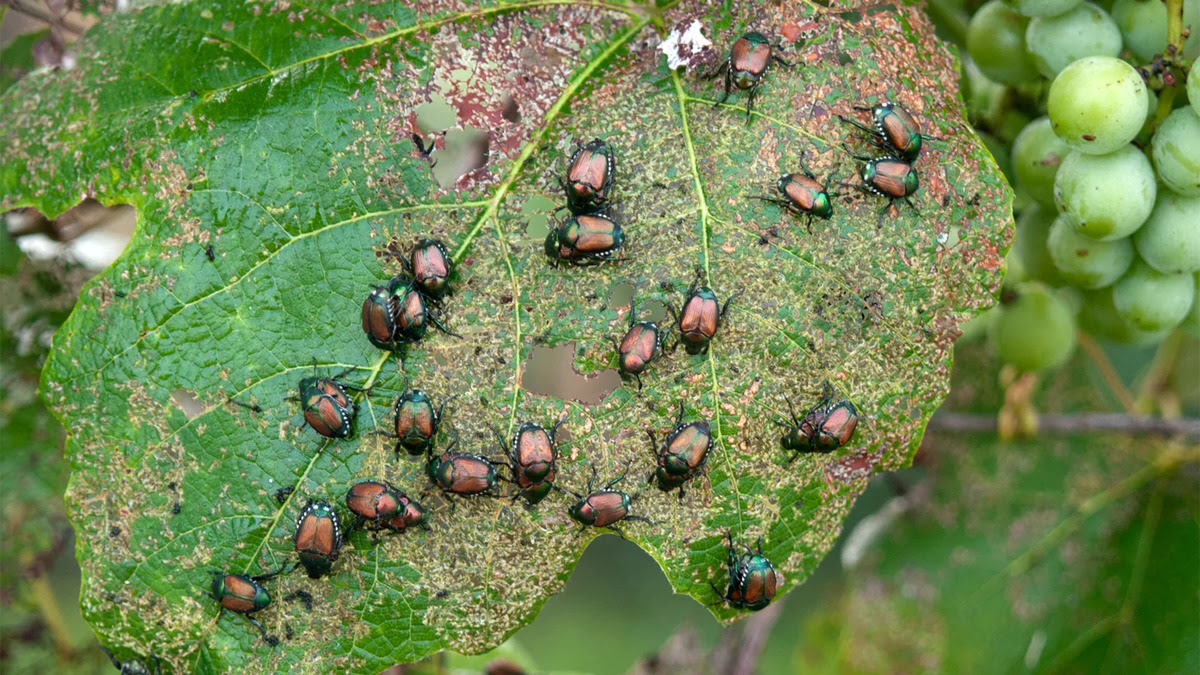Home>Gardening Tips and Tricks>Problem Solving>How To Prevent Weeds In Mulch


Problem Solving
How To Prevent Weeds In Mulch
Published: December 15, 2023
Learn effective strategies for problem solving and preventing weeds in mulch. Discover expert tips and techniques to keep your garden weed-free.
(Many of the links in this article redirect to a specific reviewed product. Your purchase of these products through affiliate links helps to generate commission for Chicagolandgardening.com, at no extra cost. Learn more)
Table of Contents
Introduction
When it comes to maintaining a pristine garden or landscape, the battle against weeds can often seem like an ongoing struggle. Weeds not only detract from the aesthetic appeal of your outdoor space but also compete with your plants for essential nutrients, water, and sunlight. One effective strategy to combat weeds is by using mulch, a versatile and beneficial material that can enhance the health and appearance of your garden beds. In this comprehensive guide, we will explore the various methods and best practices for preventing weeds in mulch, empowering you to maintain a flourishing and weed-free outdoor environment.
Mulch serves as a protective layer over the soil, offering a range of benefits such as moisture retention, temperature moderation, and soil erosion prevention. However, without proper weed prevention measures, the potential for weed growth within the mulch layer remains a significant concern. By understanding the dynamics between mulch and weeds, selecting the right type of mulch, and implementing effective preventive techniques, you can significantly reduce the presence of weeds in your garden beds, promoting the optimal growth of your cherished plants.
Throughout this guide, we will delve into the intricacies of mulch and weed management, equipping you with the knowledge and practical insights needed to safeguard your garden from invasive weeds. From selecting the most suitable mulch material to exploring natural weed control methods, this resource will provide you with a comprehensive toolkit to maintain a weed-free environment, allowing your garden to thrive and flourish. Let's embark on this journey to discover the art of preventing weeds in mulch, ensuring that your outdoor sanctuary remains vibrant and pristine.
Understanding Mulch and Weeds
Before delving into the strategies for preventing weeds in mulch, it is essential to grasp the fundamental characteristics of both mulch and weeds. Mulch, typically composed of organic materials such as wood chips, straw, or shredded leaves, serves as a protective covering for the soil in garden beds and around plants. In addition to organic options, mulch can also be derived from inorganic materials like gravel or plastic. This layer of mulch offers numerous benefits, including moisture retention, soil insulation, and the suppression of weed growth.
Weeds, on the other hand, are unwanted plants that can quickly infiltrate garden beds, competing with desirable vegetation for resources. They thrive in various conditions and can rapidly spread, posing a persistent challenge to gardeners. Common weeds include dandelions, crabgrass, and bindweed, among others, each with its own unique mechanisms for propagation and survival.
Understanding the interaction between mulch and weeds is crucial for effective weed prevention. Mulch impedes weed growth by creating a barrier that limits sunlight penetration, hindering the germination and growth of weed seeds. Moreover, organic mulches contribute to soil improvement as they decompose, enriching the soil and fostering a healthy environment for desirable plants while deterring weed establishment.
By comprehending the roles of mulch and weeds within the garden ecosystem, you can implement targeted strategies to optimize the benefits of mulch while minimizing weed proliferation. In the following sections, we will explore the selection and installation of the most suitable mulch, as well as the implementation of preventive measures to maintain a weed-free environment and promote the flourishing of your garden.
Choosing the Right Mulch
When it comes to preventing weeds in mulch, selecting the appropriate type of mulch is paramount. The choice of mulch material can significantly impact its effectiveness in weed suppression and overall performance in the garden. Organic mulches such as wood chips, straw, and shredded bark offer a range of benefits, including moisture retention, soil insulation, and weed control. These materials gradually decompose, enriching the soil and contributing to the long-term health of your garden.
Alternatively, inorganic mulches such as gravel, pebbles, and landscape fabric provide durable and long-lasting weed suppression. While they do not enrich the soil as organic mulches do, they offer effective weed control and are particularly suitable for areas where a more permanent solution is desired.
Consider the specific needs of your garden when choosing the right mulch. For example, if you are aiming to enhance the soil structure and fertility, organic mulches are an excellent choice. On the other hand, if you prioritize long-term weed suppression and low-maintenance landscaping, inorganic mulches may be more suitable.
It is also important to consider the aesthetic appeal of the mulch. Select a color and texture that complements the overall design of your garden, creating a visually appealing landscape while effectively preventing weed growth. Additionally, take into account the local climate and environmental conditions when choosing mulch, as certain materials may perform better in specific regions and weather patterns.
By carefully evaluating the characteristics and benefits of different mulch materials, you can make an informed decision that aligns with the unique requirements of your garden. The right mulch not only enhances the visual appeal of your landscape but also serves as a powerful ally in the ongoing battle against weeds, contributing to the overall health and vitality of your outdoor space.
Proper Mulch Installation
Once you have selected the appropriate mulch for your garden, proper installation is essential to maximize its weed prevention benefits. Begin by preparing the area for mulch application, ensuring that the soil is free of existing weeds and debris. If necessary, use a garden hoe or weed puller to eliminate any visible weeds before laying down the mulch.
Next, apply a layer of mulch with the appropriate thickness to effectively suppress weed growth. For most organic mulches, a depth of 2 to 4 inches is recommended, while inorganic mulches may require a thinner layer. Be mindful not to overmulch, as excessive mulch depth can lead to moisture retention issues and create an environment conducive to weed growth.
When spreading the mulch, pay attention to creating an even and uniform layer across the garden bed, ensuring that the soil is adequately covered. Take care to avoid piling mulch directly against the stems or trunks of plants, as this can trap moisture and potentially lead to rot or fungal issues. Leave a small gap around the base of trees, shrubs, and other plants to promote air circulation and prevent moisture-related damage.
Periodically inspect the mulch layer to maintain the recommended thickness and address any areas where the soil is exposed. As mulch naturally decomposes over time, replenish the layer as needed to sustain its weed-suppressing properties and overall effectiveness. Regular maintenance of the mulch layer is essential for long-term weed prevention and the optimal health of your garden.
By following proper mulch installation practices, you can harness the full potential of mulch as a formidable barrier against weeds. The careful application of mulch not only enhances the visual appeal of your garden but also contributes to the overall health and vitality of your plants, creating an environment where weeds struggle to take root and thrive.
Using Weed Barrier Fabric
Weed barrier fabric, also known as landscape fabric or weed control fabric, is a valuable tool in the fight against weed growth in garden beds. This specialized material acts as a physical barrier, inhibiting the penetration of sunlight and impeding the germination and establishment of weed seeds. When used in conjunction with mulch, weed barrier fabric offers an additional layer of defense, enhancing the effectiveness of weed prevention measures.
To utilize weed barrier fabric effectively, begin by preparing the soil and ensuring it is free of existing weeds and debris. Once the soil is ready, lay the fabric over the area to be mulched, securing it in place with landscape fabric pins or staples. It is important to overlap the edges of the fabric to create a continuous barrier that prevents weeds from finding gaps or openings through which they can emerge.
After the fabric is securely in place, apply a layer of mulch on top to provide both aesthetic appeal and further weed suppression. Organic mulches, in particular, work in tandem with the fabric to create an environment that is inhospitable to weed growth, effectively stifling the emergence of unwanted plants.
One of the key advantages of using weed barrier fabric is its ability to reduce the need for herbicides and ongoing manual weed control. By creating a physical barrier that impedes weed growth, the fabric minimizes the labor-intensive task of weed removal and maintenance, allowing for a more sustainable and low-maintenance approach to garden care.
While weed barrier fabric offers notable benefits in preventing weed growth, it is essential to select a high-quality, permeable fabric that allows for proper air and water circulation to the soil. This promotes a healthy soil ecosystem while maintaining the integrity and effectiveness of the mulch and fabric combination.
By incorporating weed barrier fabric into your weed prevention strategy, you can fortify the defenses of your garden beds against invasive weeds, creating an environment where your plants can thrive without the relentless competition from unwanted vegetation.
Regular Maintenance and Inspection
Consistent maintenance and vigilant inspection are essential components of an effective weed prevention strategy in mulched garden beds. Regularly monitoring the condition of the mulch layer and the presence of any emerging weeds allows for timely intervention, ensuring that the integrity of the weed prevention measures is upheld.
One of the primary maintenance tasks involves monitoring the thickness and condition of the mulch layer. Over time, organic mulches decompose, settle, and may become displaced due to environmental factors such as wind and heavy rainfall. It is important to replenish the mulch layer as needed to maintain the recommended depth, as a well-maintained mulch layer serves as a formidable barrier against weed growth.
During routine maintenance, inspect the mulch for signs of weed growth, particularly along the edges and in areas where the mulch layer may be thinner. Promptly remove any emerging weeds to prevent them from establishing a foothold and spreading within the garden beds. This proactive approach helps to preserve the weed-free environment and the health of your plants.
In addition to visual inspections, periodically assess the condition of weed barrier fabric if it has been incorporated into the weed prevention strategy. Ensure that the fabric remains intact and properly secured, with no tears or areas of exposure that could compromise its effectiveness as a weed deterrent.
Regularly tending to the garden beds and maintaining the mulch layer not only supports weed prevention but also contributes to the overall health and aesthetics of the landscape. By staying attuned to the evolving needs of your garden and addressing any potential issues in a timely manner, you can uphold a thriving and weed-free outdoor environment.
Natural Weed Control Methods
Implementing natural weed control methods can complement mulch-based strategies and contribute to a comprehensive approach to weed prevention in garden beds. These methods offer environmentally friendly alternatives to chemical herbicides while promoting the long-term health and sustainability of your garden.
One effective natural weed control method involves the use of vinegar as a non-toxic herbicide. Applying vinegar directly to the leaves of weeds can desiccate and kill them, offering a targeted approach to weed management. It is important to exercise caution when using vinegar to avoid inadvertently affecting desirable plants, as its non-selective nature can harm surrounding vegetation.
Another natural weed control technique is the application of boiling water to targeted weeds. Pouring boiling water over weeds can effectively destroy them by rupturing their cell walls, leading to their eventual demise. This method is particularly suitable for eliminating weeds that emerge in the cracks of paved areas or along garden borders.
Incorporating manual weed removal into your garden maintenance routine is a simple yet powerful natural control method. Regularly inspect the garden beds and manually remove any emerging weeds, ensuring that the entire root system is extracted to prevent regrowth. This hands-on approach allows for precise weed management and is especially effective when combined with mulch and other preventive measures.
Utilizing natural mulch materials such as pine straw and cocoa bean hulls can also contribute to weed control efforts. These mulches contain natural compounds that inhibit weed germination and growth, serving as a proactive defense against invasive plants. Additionally, as these materials decompose, they enrich the soil and contribute to the overall health of the garden ecosystem.
By integrating natural weed control methods into your gardening practices, you can enhance the effectiveness of mulch-based weed prevention strategies while minimizing the reliance on synthetic herbicides. These eco-friendly approaches not only support the well-being of your garden but also promote a harmonious and sustainable relationship with the natural environment.
Conclusion
Preventing weeds in mulch is a multifaceted endeavor that requires a combination of strategic planning, proper implementation, and ongoing maintenance. By understanding the dynamics between mulch and weeds, selecting the right type of mulch, and utilizing effective preventive measures, you can create an environment where weeds struggle to take root, allowing your plants to flourish and thrive.
Choosing the appropriate mulch material tailored to the specific needs of your garden is a crucial first step. Whether opting for organic mulches that enrich the soil or inorganic options that provide long-lasting weed suppression, the selection process sets the stage for successful weed prevention. Proper installation of the chosen mulch, including uniform application and periodic maintenance, ensures that its weed-suppressing properties remain effective over time.
Integrating weed barrier fabric into the weed prevention strategy offers an additional layer of defense, minimizing the need for ongoing manual weed control and herbicide usage. Natural weed control methods, such as vinegar application and manual weed removal, complement mulch-based strategies and contribute to a holistic approach to weed management.
Regular maintenance and inspection are essential for upholding the integrity of the weed prevention measures, allowing for timely intervention and the preservation of a weed-free environment. By staying attuned to the evolving needs of your garden and addressing potential issues proactively, you can maintain a vibrant and healthy outdoor space.
In conclusion, the art of preventing weeds in mulch is a harmonious blend of science, strategy, and attentive care. By leveraging the diverse array of preventive measures and natural control methods, you can create a garden environment where weeds are kept at bay, allowing your plants to thrive and flourish in a visually stunning and weed-free landscape.
